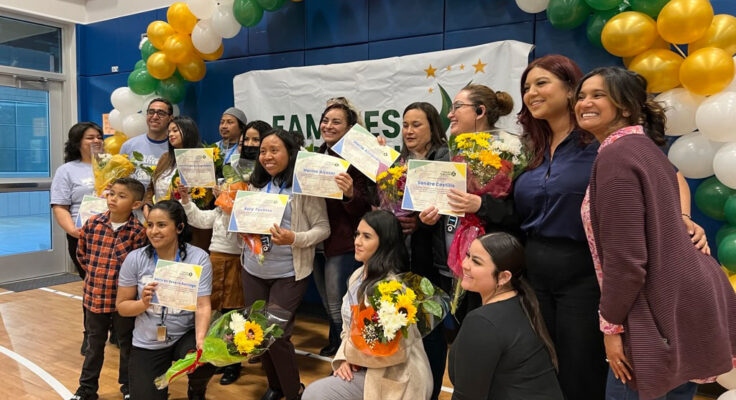
Kimi Kean, founder and executive director of Families in Action for Quality Education, makes a direct connection between her background and her passion for fighting for change in schools. “I experienced firsthand when you stop going to school and nobody notices,” Kimi says. She went to Oakland public schools from the age of seven until she dropped out in the 10th grade after going from an A to D student in the span of six months. “Nobody called home,” she remembers. “My motivation is to recreate a system where kids are seen.”
Kimi spent 15 years working in Oakland schools to create the solutions that might have better supported her as a student. Her first 10 years were within Oakland Unified School District—first as a principal, leading Acorn Woodland Elementary from one of the lowest performing ranks to a California Distinguished School, and then heading to the district’s central office.
Hoping to have a larger impact, Kimi moved to Aspire Public Schools where she served as Bay Area superintendent from 2014 to 2019. In Kimi’s view the ecosystem of public education was out of balance at this time and she saw Aspire families—who were majority low-income, Black and/or Latine people—being disparaged for choosing charter schools. People made assumptions and spoke for Aspire families rather than asking questions to better understand their experiences and aspirations for their children’s education.
Improving Access, Equity & Quality
Kimi’s curiosity about why families’ voices weren’t being elevated is what led to the founding of Families in Action in 2019. Existing efforts to “mobilize” parents within school buildings and charter networks were often more about optics rather than honoring family input. Kimi and her like-minded colleagues and partners agreed that an organization dedicated to elevating family voices and leadership was needed. “We wanted to rebalance power by putting the voices of families forward to make the system better with equitable outcomes for our children. Access, equity and quality are the things Families In Action champions,” she shares.
We wanted to rebalance power by putting the voices of families forward to make the system better with equitable outcomes for our children.
Kimi Kean
As a third party, Families in Action can open the dialogue and create a safer space for families to express opinions without having to do so directly to school leadership.
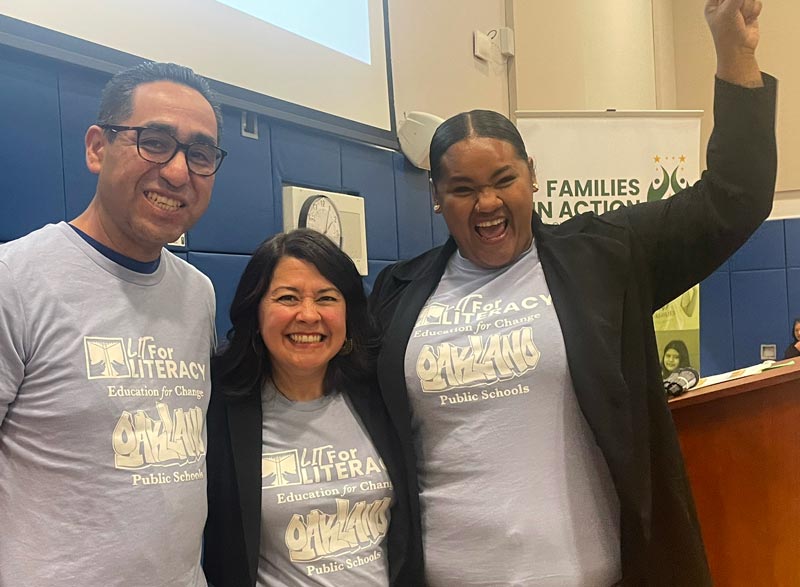
“The biggest part of Families in Action’s mission is to develop grassroots, homegrown leadership of Oakland parents, who are overwhelmingly low-income and people of color.” Peripherally, the organization builds the capacity of school leaders. “Families need champions and co-conspirators,” Kimi explains, “and we need to work the different levels of the system.” Finally, the organization prioritizes coalition building. “We’re going to be most powerful when we align our work with others,” Kimi adds.
Families in Action focuses on multiple levers for change—building community, individual coaching, education campaigns and their signature leadership institutes. Their work was informed by The Oakland REACH, another parent power organization. “They brought family leaders into a leadership institute,” she explains, “to build people’s awareness; help them connect to their stories; and learn the data and issues and figure out how they want to take action.” Kimi and her team at Families in Action used this research to develop their leadership institutes as spaces for engaging power-building principles.
Families Are Leading
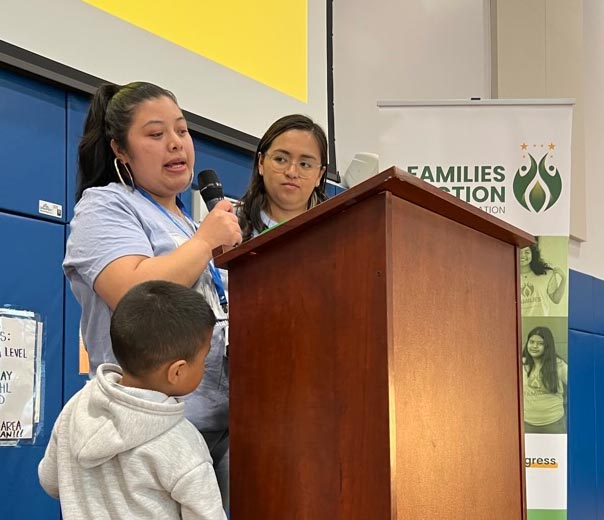
“We slow down to be with people and have them surface and share their stories, Kimi says. The leadership institutes start by prompting family participants to articulate their education story, and from there, invite them to share aspirations for their children’s education. Kimi points out that people working in school buildings are often too overburdened to do this work—a challenge she also navigated in her previous roles. Because teachers are part of the institute, this exercise builds empathy and support and breaks down systemic barriers between parents and teachers.
This year, Families in Action hosted institutes in Spanish, English, Mam and Arabic, where families among and across identities and languages shared common experiences and interests and built allegiance and collective power. “This was my life dream being realized,” Kimi reflects. “This cross-language, cross-race affinity and the power of bringing parents together. We springboard from the strength of our lived experience to our goals. It was so moving, the activism and leadership of the parents and feeling the power of their collective story. They’re agitated, they’re inspired, they’re excited.”
It was so moving, the activism and leadership of the parents and feeling the power of their collective story. They’re agitated, they’re inspired, they’re excited.
Kimi Kean
Partnering With Education For Change
In 2022, Families in Action began shaping a partnership with Education for Change to plan a Family Literacy Leadership Institute. Many children aren’t meeting grade level benchmarks, and when families receive their child’s data through the institute, they are shocked. The institute supports parent’s ability to partner with schools to create an educational plan and offers strategies to advocate for their children. Building a stronger partnership between the school and families benefits students’ academic success.
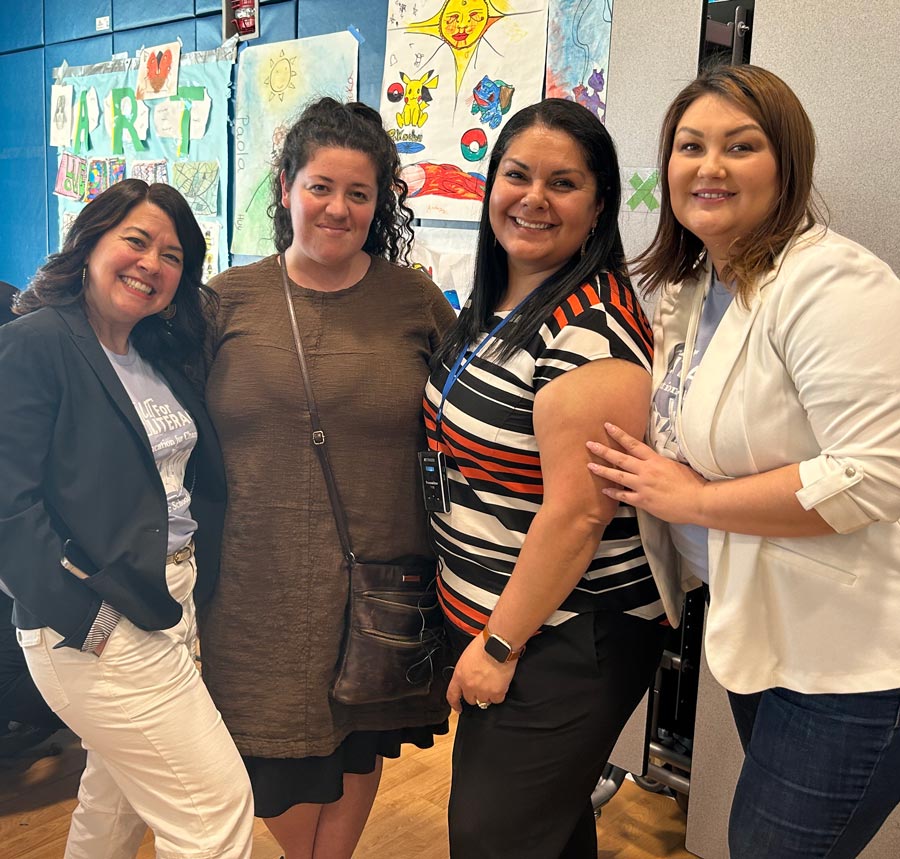
“This is the first time we’ve deeply partnered with a school,” Kimi says. “It’s been harder than doing our own thing, but much more fruitful.” The work with Education for Change has clarified what it takes to collaborate with families and have a robust academic partnership. Families in Action shared five ways Education for Change could create more space for family voice and leadership based on that experience.
“What feels unique about this partnership is that we get to coach and develop leadership capacity at multiple levels of the system.” Using pre- and post-survey tools with participating families, Families in Action tracked what was different. For every survey question, responses, upward of 90%, spoke to increases in agency, understanding about their child’s reading level and progress, as well as confidence in using tools and collaborating with other parents. “That is pretty off the charts,” Kimi shares. “Moving forward, we want to be able to say that 90-100% of children meet their literacy goals.”
After this successful pilot, the Family Literacy Leadership Institute is scaling into five additional charter and district schools in the 2023-24 school year.
Families crave this level of engagement, access and action.
Dana Cilono
Striving For System-Wide Success
“We want to shift the culture of the schools. We’ll be successful when families feel welcome, comfortable and confident being intimately involved with their children’s schools, as partners,” Kimi says.
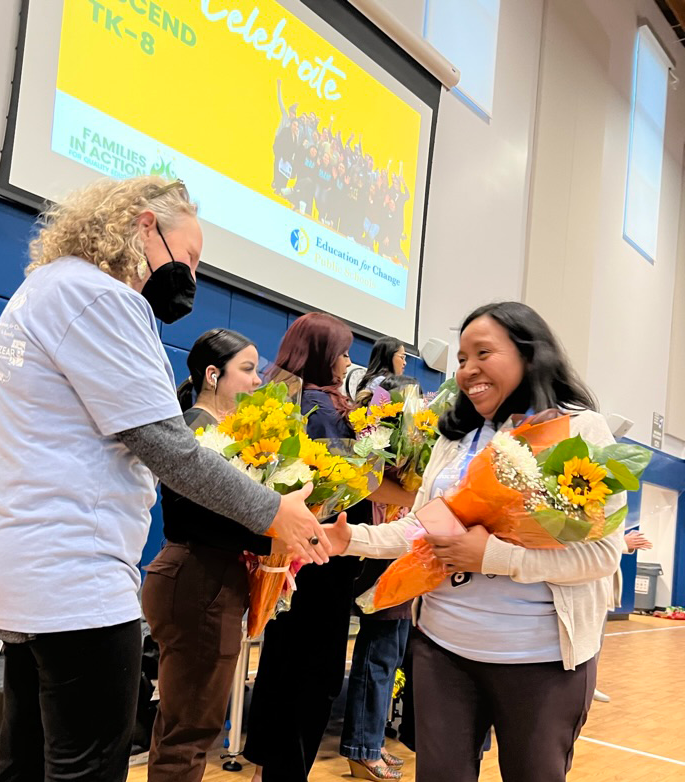
At a recent Family Leadership Institute graduation, Kimi was moved that at least a third of the graduates hadn’t graduated from high school themselves and were now having a graduation experience of their own. “What’s missing is space for families we’re serving to be at the leadership tables, to be influential, and to be seen, heard and valued as important partners. More equity will come about when we stop working on behalf of our families and instead work with our families.”
The Kenneth Rainin Foundation is proud to support Families in Action’s work and is learning a great deal from them about effective capacity-building opportunities for families. “Families crave this level of engagement, access and action. Families in Action is challenging common misconceptions and stereotypes about families that have existed for too long and need to go,” shared Dana Cilono, Rainin Foundation Director, Education Strategy & Ventures.
